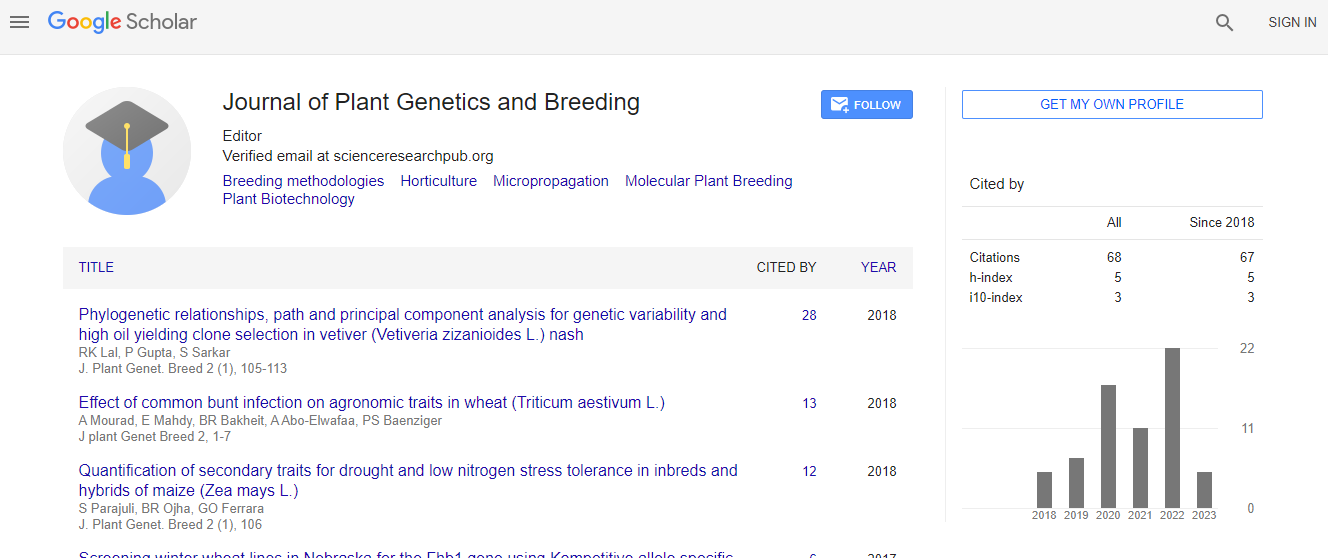Plant Pathology 2018: Recent Advances in Antifungal Properties of Essential Oils Against Anthracnose Disease in Tropical Fruits and its Future Perspectives- VB Kudachikar, Central Food Technological Research Institute, India
*Corresponding Author:
Copyright: © 2020 . This is an open-access article distributed under the terms of the Creative Commons Attribution License, which permits unrestricted use, distribution, and reproduction in any medium, provided the original author and source are credited.
Abstract
Introduction & Aim: The development and adaptions of improved farming and postharvest protection techniques for sustainable agriculture have become indispensable to curtail pre and post losses. There is a huge demand for healthy nutritious fresh produce to meet the requirement of the global population. New initiatives to boost agriculture productivity by maximizing pre and post-harvest yields achieved through efficient pre and postharvest management of major plant diseases. As an alternative to chemical fungicides, the global attention towards the development of plant-based organic fungicides is gaining popularity as green fungicides, considering their merits and advantages on the sustainable basis. Plant disease management with plant essential oil is recognized as one of the ecofriendly approaches. A vast number of plant essential oils exhibited different levels of antimicrobial activities to various ranges of plant fungal and bacterial pathogens and had effectively reduced the severity of the major diseases in horticultural crops. This discussion will provide an overview of antifungal properties, the mechanisms of action, of essential oils and their specific volatile components identified against anthracnose (Colletotrichum spp.) in tropical fruits, highlighting the research gaps, use of reviewed knowledge and its future perspectives
that could be used in future research to develop plant-based biochemical fungicides as an alternative to synthetic fungicides. Findings: Post-harvest diseases of fruit and vegetables have to be controlled because of the high added value of commodities and the great economic loss related to spoilage. Synthetic fungicides are the first choice worldwide to control post-harvest diseases of fruit and vegetables. However, several problems and constraints related to their use have forced scientists to develop alternatives control means to prevent post-harvest diseases. Physical and biological means, resistance inducers, and GRAS (generally recognized as safe) compounds are the most important alternatives used during the last 20 years. Recently, nanomaterial treatments have demonstrated promising results and they are being investigated to reduce the utilization of synthetic fungicides to control post-harvest rot in fruit and vegetables. The collective information in this review article covers a wide range of nanomaterials used to control post-harvest decays related to each selected fruit crop including grape, citrus, banana, apple, mango, peach, and nectarine. Other examples also used are apricot, guava, avocado, papaya, dragon, pear, longan, loquat, jujubes, and pomegranate fruits.

 Spanish
Spanish  Chinese
Chinese  Russian
Russian  German
German  French
French  Japanese
Japanese  Portuguese
Portuguese  Hindi
Hindi 